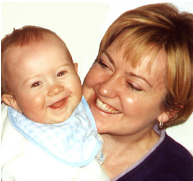The Diseases of Non-Attachment
...The distinguishing characteristic of the diseases of nonattachment is the incapacity of the person to form human bonds. In personal encounter with such an individual there is an almost perceptible feeling of intervening space, of remoteness, of "no connection". The life histories of people with such a disease reveal no single significant human relationship. The narrative of their lives reads like a vagrant journey with chance encounters and transient partnerships. Since no partner is valued, any one partner can be exchanged for any other, in the absence of love, there is no pain in loss. Indeed, the other striking characteristic of such people is their impoverished emotional range. There is no joy, no grief, no guilt, and no remorse. In the absence of human ties, a conscience cannot be formed; even the qualities of self-observation and self-criticism fail to develop...
...Some of these men and women are to be found in institutions for the mentally ill, a good many of them are part of the floating populations of prisons. A very large number of them have settled inconspicuously in the disordered landscape of a slum, or a carnie show, or underworld enterprises, where the absence of human connections can afford vocation and specialization. For the women among them, prostitution affords professional scope for the condition of emotional deadness. Many of them marry and produce children, or produce children and do not marry. And because tenderness or even obligatory parental postures were never a part of their experience, they are indifferent to their young, or sometimes "inhumanly cruel", as we say, except that cruelty to the young appears to be a rare occurrence outside of the human race.
A good many of these hollow men remain anonymous in our society. But there are conditions under which they rise from anonymity and confront us with dead unsmiling faces. The disease of emotional poverty creates its own appetite for powerful sensation. The deadness within becomes the source of an intolerable tension - quite simply, I think, the ultimate terror of non-being, the dissolution of self. The deadness within demands at times powerful psychic jolts in order to affirm existence. Some get their jolts from drugs. Others are driven to perform brutal acts...
...But if I have emphasized the potential for crime and violence in this group, I do not wish to distort the picture. A large number of these men and women distinguish themselves in no other way than their attitude of indifference to life and an absence of human connections...
...They become, of course, the permanently unattached men and women of the next generation. But beyond this, we have made an extraordinary and sobering discovery. An unattached child, even at the age of three or four, cannot easily attach himself even when he is provided with the most favourable conditions for the formation of a human bond. The most expert clinical workers and foster parents can testify that to win such a child, to make him care, to become important to him, to be needed by him, and finally to be loved by him, is the work of months and years. Yet all of this, including the achievement of a binding love for a partner, normally takes place, without psychiatric consultation, in ordinary homes, and with ordinary babies, during the first year of life...
Reprinted with permission from Every Child's Birthright: In Defence of Mothering by Selma Fraiberg. Basic Books Inc., 1977. This excerpt first appeared in the magazine Commentary, December 1967, and is reprinted here by permission. All rights reserved.
